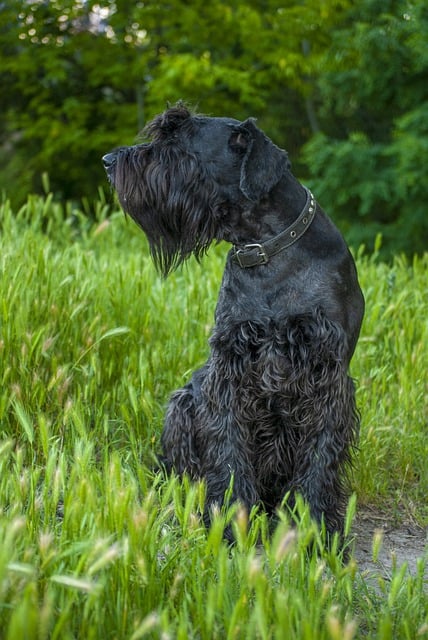


The Giant Schnauzer is a large, powerful, and energetic breed that is known for its intelligence and versatility. Originally bred in Germany, this breed has been used for a variety of purposes, including as a working dog, guard dog, and even as a companion. The Giant Schnauzer is recognized for its distinct appearance, including its bushy eyebrows, beard, and a strong, muscular build.
The Giant Schnauzer was developed in the late 19th century in Germany. It was initially used for driving cattle and guarding breweries. The breed is believed to have been a cross between the Standard Schnauzer and larger dogs like the Bouvier des Flandres and the Doberman Pinscher. The breed gained popularity as a working dog, especially for police and military roles, due to its intelligence, strength, and protective instincts. Today, it is commonly kept as a family companion and working dog.
The Giant Schnauzer is a large dog, typically standing between 24 to 27.5 inches (61 to 70 cm) tall at the shoulder and weighing between 55 to 85 pounds (25 to 39 kg). It has a distinctive coat that is dense, wiry, and harsh to the touch, and comes in three colors: salt and pepper, pure black, and black and silver. The breed's face features a prominent beard and bushy eyebrows, giving it a unique and expressive look. The Giant Schnauzer has a strong, athletic build with a broad chest, well-muscled legs, and a straight back.
Giant Schnauzers are known for their loyal, protective, and confident personalities. They are highly devoted to their families and make excellent watchdogs. Despite their intimidating size and appearance, they are often affectionate and gentle with their family members, especially when raised with love and attention. They are typically reserved around strangers, but with proper training and socialization, they can be friendly and welcoming. They can also be independent and strong-willed, which can make training a challenge for novice dog owners.
Being an active and energetic breed, the Giant Schnauzer requires regular and vigorous exercise to stay healthy and happy. They thrive with activities that engage both their body and mind, such as long walks, running, hiking, and playing fetch. They also enjoy participating in dog sports such as obedience, agility, and herding. Without sufficient exercise, Giant Schnauzers can become bored and potentially destructive, so it is important to provide them with plenty of opportunities for physical activity each day.
Training a Giant Schnauzer requires patience, consistency, and positive reinforcement. They are intelligent and eager to please but can also be stubborn at times. Early socialization is essential to help them become well-rounded, as they can be wary of strangers and other animals. Positive experiences with people, pets, and different environments will help them develop into well-behaved adults. Given their strong guarding instincts, it is important to start training early to ensure they are well-mannered and not overly protective or territorial.
Giant Schnauzers are generally a healthy breed, but they can be prone to certain health issues. Some of the common concerns include hip dysplasia, progressive retinal atrophy (PRA), and bloat (gastric torsion). Regular veterinary check-ups, a balanced diet, and proper exercise are important to maintain their overall health. Their coat requires regular grooming to prevent mats and tangles, and their beard and eyebrows should be trimmed to maintain their distinctive appearance. Brushing the coat a few times a week is typically sufficient to keep it in good condition.
The average lifespan of a Giant Schnauzer is between 10 to 12 years. With proper care, a healthy diet, and regular veterinary visits, some Giant Schnauzers may live even longer. It is important to monitor their health throughout their life, especially as they age, to ensure they remain active and comfortable in their later years.
© copyright Dog Compendium 2024 - 2025